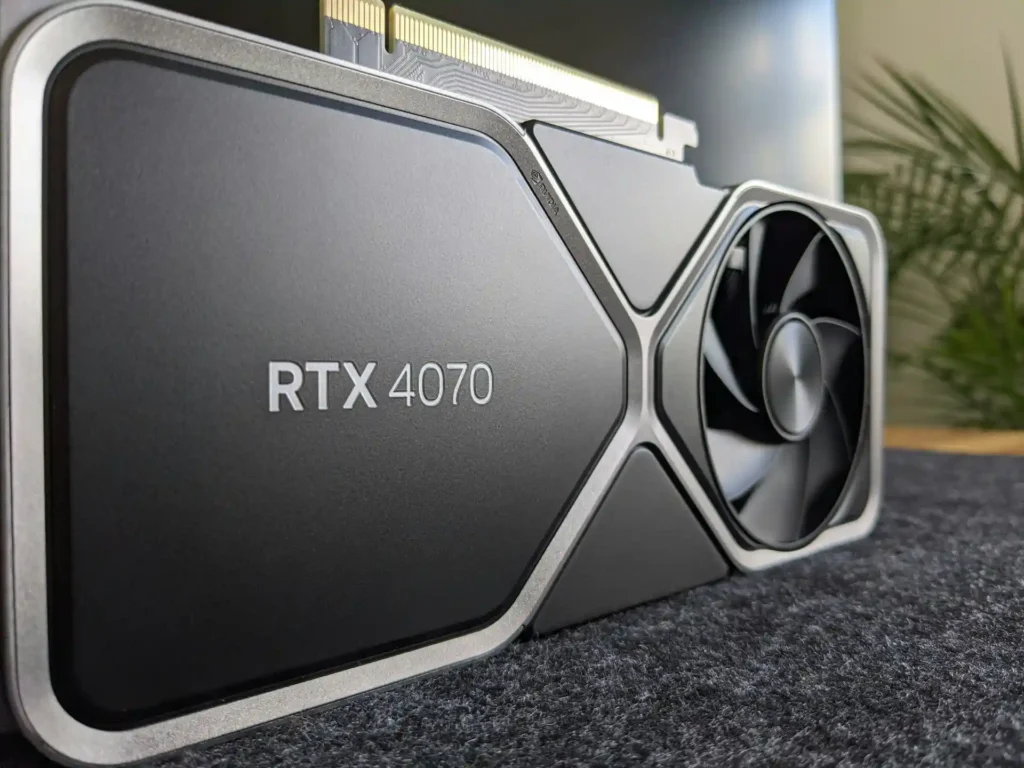NVIDIA is a major name in graphics cards, and fans appreciate both its GTX and RTX series. The arrival of the new RTX 50 Series in 2025 adds a twist to the decision-making process. GTX vs RTX! This article explains each option in plain language so you can decide what suits your needs.
What Is GTX?
GTX cards have a long history. NVIDIA began with models like the GTX 260 and GTX 280 in 2008. Later, models such as the GTX 1050, GTX 1060, GTX 1070, and GTX 1080 became popular among gamers because they delivered solid results at a low price.
The last GTX releases were the GTX 1660 and GTX 1660 Ti, issued just before the company switched its focus to RTX. Even though no new GTX cards are being made, many users still choose them.
People often choose GTX cards because they are more affordable. They also use less power, which suits smaller or older systems that cannot handle high energy draws. With a GTX card, games like Minecraft, CS: GO, and League of Legends run smoothly without extra bells and whistles
What Is RTX?
RTX cards brought a big change when introduced in 2018. They added two new ideas: the ability to create lifelike lighting, reflections, and shadows through real-time ray tracing, and the use of artificial intelligence with DLSS to enhance image quality.
The first models were the RTX 2060, RTX 2070, and RTX 2080. Soon afterward, the RTX 30 Series appeared with models such as the RTX 3060 and RTX 3080.
Now, in 2025, NVIDIA has launched the RTX 50 Series. These cards run games and creative applications at speeds that earlier models could not match.
RTX cards use special hardware that produces lifelike light and shadow effects. This technology makes titles like Cyberpunk 2077, Minecraft RTX, and Battlefield V look much more realistic. DLSS improves motion smoothness so that even games played in 4K remain fluid.
Creators working in video editing, animation, 3D modeling, or game development see their work sped up considerably with RTX cards, as they handle complex tasks more quickly than GTX alternatives.
RTX 50 Series: The New Standard
The RTX 50 Series, available in 2025, raises the bar for graphics cards. Built on NVIDIA’s latest Blackwell architecture, these cards execute tasks faster than earlier versions. For instance, the RTX 5090 operates at twice the speed of the RTX 4090.
This jump in speed means that games run more smoothly and creative tasks like video editing or 3D rendering are completed much faster. For anyone looking for the highest quality graphics solution this year, the RTX 50 Series stands apart.
Comparing GTX vs RTX
The differences between these two families can be summed up by what each card offers and how quickly they work.
RTX cards have dedicated hardware for realistic lighting and shadows, while GTX cards rely on software and can’t achieve the same effect. RTX models also use an AI tool to improve motion, making them better suited for demanding games.
In raw speed, newer chip designs in RTX cards deliver a noticeable upgrade. On the flip side, GTX cards cost less and draw less power, which works well for users with simpler needs.
Comparison Table: GTX vs RTX
| Feature | GTX Cards | RTX Cards |
| Ray Tracing | Software-based (slower) | Hardware-accelerated (real-time) |
| DLSS (AI Upscaling) | Not available | Available (DLSS 2.0, 3.0, 4.0) |
| Performance | Good for older games | Excellent for modern games |
| Energy Efficiency | High | Moderate to high |
| Best Use Case | Budget gaming, older games | Modern gaming, professional tasks |
| Price Range | Affordable | Premium |
| Architecture | Older | Advanced (with Tensor Cores) |
Gaming and Creative Work
If you want the best graphics in new games, an RTX card is the way to go. It lets you play in high resolution without making the game lag.
Fast games like Fortnite, Call of Duty, or Valorant feel smoother with it. A GTX card might need lower settings, and without ray tracing, the graphics won’t look as real. In competitive games, extra frames can help you react faster.
For creators working in fields such as video editing or 3D modeling, RTX cards help complete tasks faster and produce better results. Even older RTX models outperform GTX cards in handling complex, creative work.
Which Card Should You Choose?
Your choice depends on your own situation and budget. If your computer is older or your gaming needs are modest, a GTX card fits the bill. Its lower cost and smaller energy draw make it a smart choice for everyday gaming, though it lacks the modern features that make demanding titles shine.
If you wish to enjoy the latest game visuals or need a tool that speeds up creative projects, an RTX card is a better investment. Many find that even earlier RTX models work much better than GTX cards, and those planning ahead will see the RTX 50 Series as a standout option.
Final Thoughts
For those who can invest in premium graphics technology, RTX cards, particularly the RTX 50 Series, provide an unmatched experience in 2025. They deliver lifelike visuals and quicker processing that benefit both gaming and creative tasks.
If your funds are limited or your needs are simpler, GTX cards still serve well. NVIDIA offers solutions for every type of user, but for the freshest game visuals and a boost in creative speed, RTX emerges as the clear winner.












